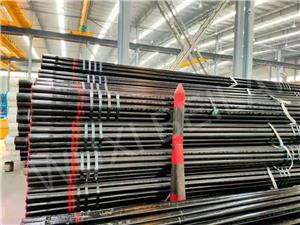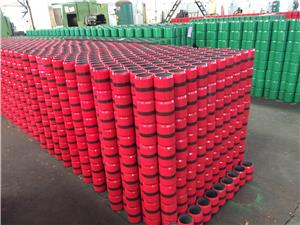The difference between several common hardness expression methods
Brinell hardness (HB), Rockwell hardness (HRC), Vickers hardness (HV) and Leeb hardness (HL) are four different hardness testing methods, each of which has its own unique testing principle, application range and characteristics. The following are the detailed differences between the four hardness testing methods:
Test principle
Brinell Hardness (HB) :
Principle: With a certain size of the test load, the hardened steel ball or cemented carbide ball of a certain diameter is pressed into the metal surface to be measured, maintained for a specified time, and then unloaded to measure the indentation diameter of the measured surface. The Brinell hardness value is the quotient of the load divided by the surface area of the indentation sphere.
Features: The indentation is large, the measurement value is accurate, but the operation is relatively cumbersome, you need to measure the indentation diameter with a microscope, and then look up the table or calculate the hardness value.
Rockwell Hardness (HRC) :
Principle: Under the specified external load, the specified diameter of the steel ball or the diamond indenter with a cone Angle of 120° is pressed into the surface of the material to be tested, resulting in a dent, and the hardness expressed by the depth of the measured dent is Rockwell hardness.
Features: small indentation, simple and rapid measurement, suitable for hardness determination of finished products and sheets, classified as non-destructive testing. However, the representation is poor, and the measured value may not be accurate enough for materials with uneven organization.
Vickers Hardness (HV) :
Principle: A diamond pyramid indenter with an Angle of 136° between the relative surfaces is pressed into the surface of the tested sample under the specified load F, and the load is removed after a fixed time, the diagonal length of the indentation d is measured, and the indentation surface area is calculated, and the average pressure on the indentation surface area is finally obtained, that is, the Vickers hardness value.
Features: Wide measuring range, can measure almost all metal materials used in industry, from very soft materials to very hard materials can be measured. At the same time, Vickers hardness is also suitable for microscopic analysis, which has advantages for the determination of hardness in small areas or thin layers.
Leeb Hardness (HL) :
Principle: With the specified quality of the impact body under the action of elasticity at a certain speed impact on the surface of the sample, with the punch at the distance of 1mm from the surface of the sample to the ratio of the rebound speed and impact speed calculated value is Leeb hardness.
Features: easy to measure, belongs to the dynamic load test method, and related to the elastic modulus of metal materials. Leeb hardness tester is generally composed of impact device, display device and recording device. The quality of impact device directly affects the accuracy and stability of data.
Scope of application
Brinell hardness (HB) : It is generally used when the material is soft, such as non-ferrous metals, steel before heat treatment or after annealing. Due to the large indentation, it is not suitable for the hardness determination of finished products and sheets.
Rockwell hardness (HRC) : Generally used for materials with higher hardness, such as hardened steel. The indentation is small, the measurement is simple and rapid, and it is suitable for the hardness determination of finished products and thin sheets.
Vickers hardness (HV) : Suitable for hardness determination of larger workpieces and deeper surfaces, but also suitable for microscopic analysis and small load, micro Vickers hardness determination.
Leeb Hardness (HL) : Easy to measure and suitable for a variety of metal materials, especially when other hardness testing methods are difficult to perform (such as large workpieces or parts that are not easy to disassemble).




